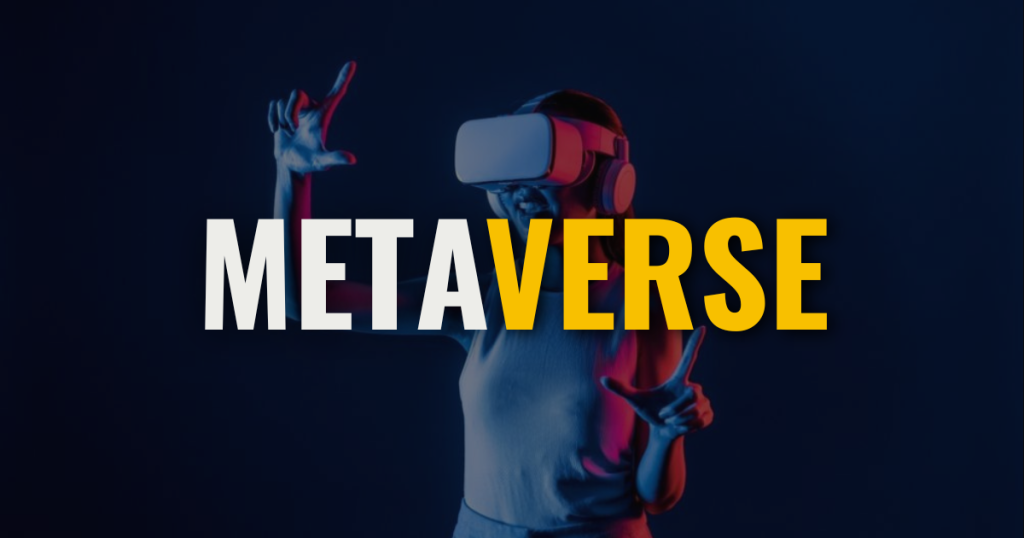The Metaverse is set to reshape our digital lives, offering an immersive and interconnected virtual world. Here’s a deep dive into the Metaverse’s key aspects, opportunities, and challenges.
Metaverse?
The Metaverse is a Digital world where the real and virtual worlds come together. It’s a space where people can interact, socialize, play games, work, learn, and attend events, all within a persistent, online environment. Think of it as a network of 3D virtual spaces that allow users to fully immerse themselves in various activities, creating a more interactive and social experience beyond just gaming or VR.
Immersive Virtual Environments:
- 3D Spaces: The Metaverse relies on immersive 3D environments that users can explore through virtual reality (VR) headsets or augmented reality (AR) glasses. These environments simulate real-world interactions, from walking through a virtual store to attending a live concert or sports event.
- Realistic Experience: Advanced graphics and interaction technologies ensure that these environments are as realistic as possible, making users feel as if they are actually in these digital spaces. The Metaverse strives to make virtual experiences indistinguishable from reality, allowing for deeper emotional and social engagement.
Digital Economy:
- Virtual Assets: The Metaverse will have its economy based on virtual goods and services, such as virtual real estate, avatars, and digital collectibles like NFTs. These items will have real monetary value, allowing users to buy, sell, and trade assets within the digital ecosystem.
- Cryptocurrency and Blockchain: Cryptocurrencies and blockchain technology are fundamental to the Metaverse’s economy. Blockchain enables secure, transparent ownership of virtual assets and transactions. NFTs (non-fungible tokens) ensure that virtual goods are unique, traceable, and verifiably owned by users.
Social Interaction:
- Digital Social Spaces: The Metaverse allows for new ways of socializing. Whether you’re attending a virtual event, exploring a new world, or collaborating with others on a project, the Metaverse facilitates rich social experiences.
- Live Events: Concerts, live sports, virtual theater, and meetups are happening within the Metaverse. This virtual interaction allows for a new kind of social bonding where physical presence is no longer required.
AI and Automation:
- AI-Powered Characters: Artificial intelligence enhances the Metaverse by powering avatars and NPCs (non-player characters) that can interact with users in a meaningful way.
- Dynamic Worlds: AI and automation also allow the Metaverse to evolve based on user behavior. Environments can adapt to user’s actions, generating personalized experiences or even creating dynamic events that can change the course of a virtual story or activity.
Key Players in the Metaverse
1. Meta (formerly Facebook):
- Investment in VR/AR: Meta, under the leadership of Mark Zuckerberg, is investing billions in creating the Metaverse. The company has rebranded itself to emphasize its focus on virtual reality, social VR platforms (like Horizon Worlds), and hardware (Oculus headsets).
- Social Integration: Meta’s goal is to build a Metaverse that connects people socially, making virtual experiences as natural as in-person interactions.
2. Microsoft:
- Enterprise Focus: While Meta aims to create a consumer-focused Metaverse, Microsoft is looking to develop Metaverse applications for businesses, such as virtual meetings, team collaboration, and remote work solutions using its Mesh platform.
- Mixed Reality: With products like HoloLens and Azure Cloud, Microsoft’s focus is on blending physical and digital worlds, providing tools for enterprises to create Metaverse-driven solutions.
3. Epic Games:
- Gaming and Content Creation: Epic Games, the creator of Fortnite and Unreal Engine, is a major player in the Metaverse space. Fortnite has already hosted virtual concerts, live events, and cross-platform activities that hint at the potential of the Metaverse in gaming.
- Metaverse Infrastructure: Unreal Engine is the backbone of many virtual experiences in the Metaverse, providing the tools necessary to build immersive environments and experiences.
4. Other Innovators:
- Roblox: A popular platform where users can create and play games, Roblox allows users to generate their own virtual worlds, making it an early Metaverse player. It also allows for the trading of virtual goods and items, forming a virtual economy.
- Decentraland and The Sandbox: These blockchain-based platforms offer users the ability to buy, sell, and build on virtual real estate using NFTs. These worlds are key examples of how the Metaverse can offer decentralized ownership and trade in a digital space.
Challenges and Considerations
- Data Protection: As users spend more time in the Metaverse, protecting personal data will become increasingly critical. Companies will need to implement strong security measures to prevent cybercrime.
- Identity Theft and Fraud: Digital assets and personal information need to be safeguarded to avoid theft and misuse in the Metaverse.
- Virtual Crime and Safety: With a new digital realm comes the potential for virtual crime. Issues related to harassment, abuse, and misconduct will need to be addressed.
- Mental Health: Prolonged use of immersive environments may impact mental health, requiring studies and guidelines to manage these effects
Embracing the Future of the Metaverse
The Metaverse is not just a vision of tomorrow; it’s a rapidly evolving reality. Bridging the gap between the physical and digital worlds opens up endless opportunities for innovation and collaboration. From transforming how we work and learn to create new ways to socialize and entertain, the Metaverse promises to redefine human interaction.
As we continue to explore its potential, the Metaverse is set to become our digital future, reshaping how we live, connect, and thrive in a tech-driven world.

